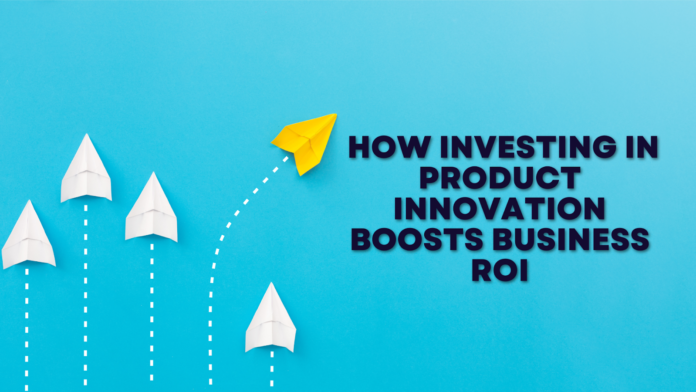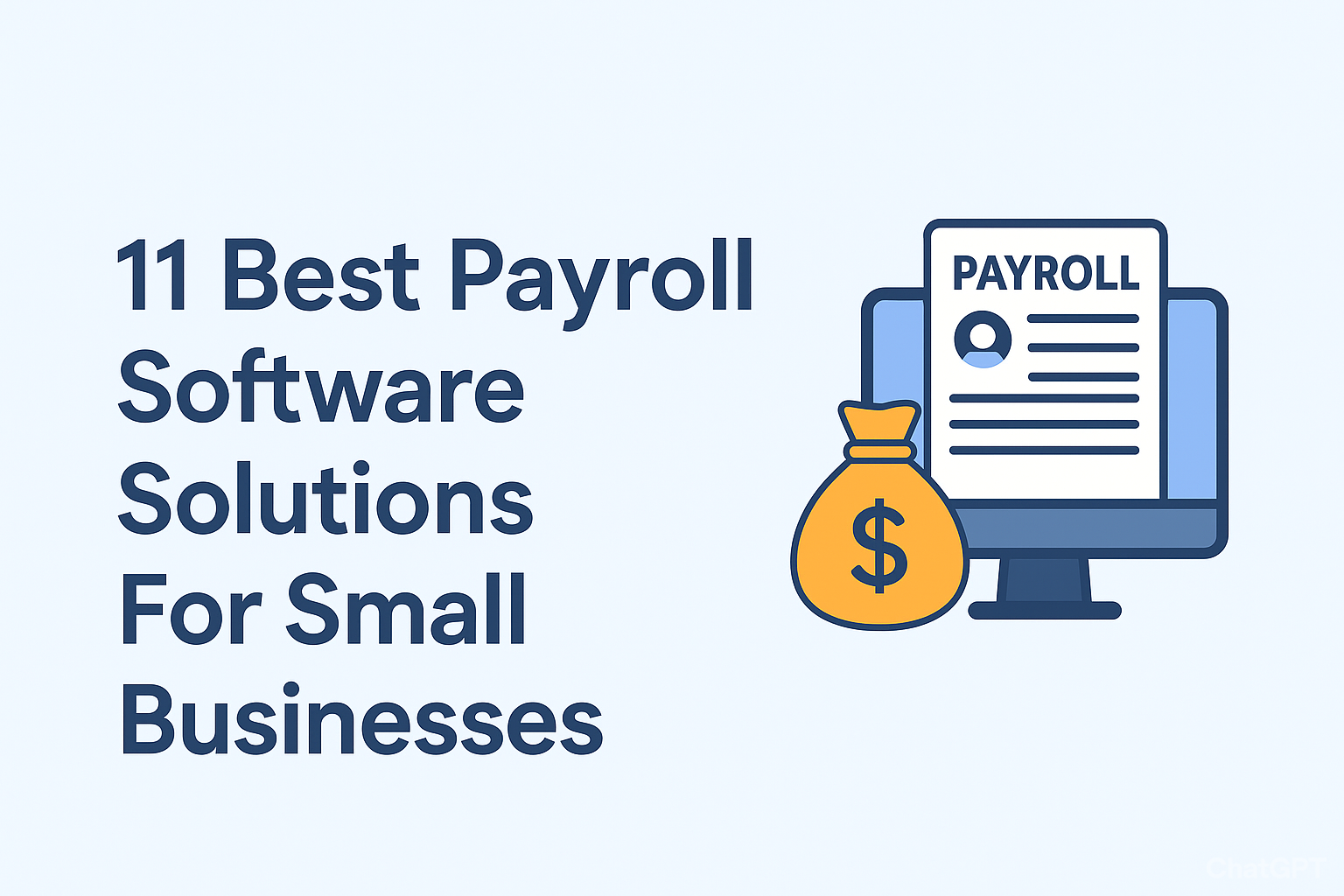Last Updated on August 15, 2024 by Nadeem Ahmed
In today’s fast-paced and highly competitive business landscape, the ability to innovate has become a critical differentiator. While the path to successful product innovation is undeniably challenging, with a staggering 95% of efforts failing to meet their mark, the potential rewards are too significant to ignore. Companies that navigate this path successfully see remarkable outcomes, including up to 33% growth, with notable increases in both revenue and earnings. This stark contrast underscores the transformative power of product innovation on a company’s financial health.
Table of Contents
Linking Product Innovation to Increased ROI
The statistics are clear: innovative companies grow faster and more profitably than their counterparts. Businesses that prioritize innovation see tangible results, with a 33% growth rate, driven by an 11% increase in revenue and a 22% boost in earnings before interest, taxes, depreciation, and amortization (EBITDA).
These figures are not mere coincidences. By introducing new and improved products to the market through product innovation, companies can:
– Gain Competitive Advantage: Distinguishing offerings enable businesses to stand out in saturated markets, attracting new customers and retaining existing ones.
– Increase Market Share: Innovative products can tap into unmet customer needs, enabling companies to capture a larger share of the market.
– Drive Premium Pricing: Unique and desirable products often command higher price points, leading to improved profit margins.
“As Steve Jobs eloquently put it, innovation is the ability to perceive change as an opportunity rather than a threat.” – Steve Jobs
As Steve Jobs’ quote eloquently captures, embracing innovation can propel businesses forward, transforming challenges into opportunities and driving long-term, sustainable growth.
Real-World Example: Apple’s Innovation-Driven Success
Apple’s meteoric rise serves as a testament to the power of product innovation. By continuously redefining consumer electronics with groundbreaking products like the iPod, iPhone, and iPad, Apple has consistently stayed ahead of the curve. This relentless pursuit of innovation has fueled the company’s growth, with its market capitalization soaring from $3.2 billion in 2000 to over $2 trillion in 2022.
The Role of Consumer Insights in Shaping Product Innovation
A deep understanding of consumer needs and preferences is key to unlocking the profitability and growth associated with product innovation. With 63% of customers expressing a preference for brands that regularly introduce new products, the message is clear: innovation must be customer-centric.
Companies can direct their innovation efforts more effectively by tapping into consumer insights, ensuring that their new products not only meet but exceed customer expectations. This can be achieved through various channels, including:
– Market Research: Conducting surveys, focus groups, and data analysis to identify unmet customer needs and emerging trends.
– Customer Feedback: Actively soliciting and analyzing feedback from existing customers to identify areas for improvement and potential new product opportunities.
– Social Media Monitoring: Leveraging social media platforms to gauge customer sentiment, preferences, and pain points.
– User Testing: Involving customers in the product development process through beta testing and usability studies.
Adopting a customer-centric approach to innovation not only increases the likelihood of success but also nurtures stronger brand loyalty and advocacy.
Real-World Example: Lego’s Customer-Driven Innovation
Lego, the iconic toy company, has mastered the art of customer-centric innovation. By actively engaging with its vast community of fans and enthusiasts, Lego has been able to identify new product opportunities and refine existing offerings. The Lego Ideas platform, for instance, allows fans to submit and vote on new set ideas, with the most popular ones being turned into actual products. This collaborative approach has enabled Lego to stay relevant and continue captivating new generations of builders.
Overcoming Barriers to Product Innovation
However, acknowledging the value of customer-centric innovation is just one part of the equation. The path to successful product innovation is often hindered by significant barriers, including financial constraints and, notably, internal cultural obstacles.
Common barriers to product innovation include:
- Financial Limitations: Investing in research and development (R&D) can be costly, posing challenges for businesses with limited budgets.
- Organizational Silos: Compartmentalized structures can impede cross-functional collaboration, hindering the free flow of ideas and insights.
- Risk Aversion: A fear of failure or disrupting the status quo can stifle innovation efforts within an organization.
- Lack of Leadership Support: Without buy-in and active support from top leadership, innovation initiatives may struggle to gain traction.
To overcome these challenges, businesses must adopt a multi-faceted approach:
1. Foster a Culture of Innovation
- -Encourage risk-taking and celebrate failures as learning opportunities.
- Implement cross-functional teams to encourage diverse perspectives and collaboration.
- Provide dedicated time and resources for employees to explore new ideas.
2. Leverage Partnerships and External Resources
- Collaborate with universities, research institutions, or industry partners to access specialized expertise and resources.
- Explore open innovation models, crowdsourcing ideas from external sources.
3. Implement Agile Methodologies
- Adopt iterative development processes that allow for rapid prototyping, testing, and refinement of new product concepts.
- Embrace a “fail fast, learn faster” mindset to quickly pivot or abandon unsuccessful initiatives.
4. Align Innovation Efforts with Strategic Goals
- Ensure that innovation initiatives are aligned with the overall business strategy and direction.
- Define clear metrics and objectives to measure the success of product innovation efforts.
By proactively addressing these barriers, businesses can cultivate an environment conducive to innovation, increasing their chances of success and maximizing their return on investment (ROI).
Real-World Example: 3M’s Culture of Innovation
3M, the diversified technology company, has long been celebrated for its innovative culture. Through initiatives like the “15% Rule,” which encourages employees to dedicate 15% of their time to pursuing creative projects, 3M has fostered an environment that empowers and rewards innovation. This forward-thinking approach has yielded numerous groundbreaking products, such as Post-it Notes and Scotch Tape, contributing significantly to the company’s enduring success.
Investing in R&D: A Catalyst for Product Innovation
One of the most significant drivers of product innovation is investment in research and development (R&D). By dedicating resources to exploring new ideas, technologies, and processes, businesses can stay ahead of the curve and develop cutting-edge products that meet evolving customer needs.
The benefits of investing in R&D are numerous and far-reaching:
- Competitive Advantage: R&D investments can lead to the development of proprietary technologies and intellectual property, giving businesses a unique competitive edge.
- New Product Development: A robust R&D pipeline can fuel a steady stream of new product launches, allowing companies to remain relevant and capture emerging market opportunities.
- Process Improvements: R&D efforts can also lead to the optimization of manufacturing processes, resulting in increased efficiency, cost savings, and enhanced product quality.
- Long-Term Growth: Companies that consistently invest in R&D are better positioned to adapt to changing market conditions and sustain long-term growth.
While the upfront costs of R&D can be substantial, the potential returns on investment make it a strategic imperative for businesses seeking to thrive in a rapidly evolving market.
Comparison Table: R&D Spending and Innovation Performance
| Company | R&D Spending (% of Revenue) | Number of Patents Filed (2021) | Major Innovative Products |
| Apple | 7.6% | 2,868 | iPhone, iPad, Apple Watch |
| Samsung | 7.5% | 11,898 | Galaxy smartphones, QLED TVs |
| Microsoft | 13.4% | 3,250 | Surface devices, Xbox consoles |
| Amazon | 11.6% | 2,775 | Alexa, AWS cloud services |
| 15.2% | 5,428 | Android OS, Google Search algorithms |
This table highlights the strong correlation between R&D investment and innovation performance across various industry leaders. Companies that allocate substantial resources to R&D tend to file a higher number of patents and introduce groundbreaking products and technologies, solidifying their competitive positions.
Real-World Example: Tesla’s Disruptive Innovation Through R&D
Tesla, the electric vehicle and clean energy company, exemplifies the transformative power of R&D-driven innovation. By investing heavily in battery technology, autonomous driving systems, and renewable energy solutions, Tesla has disrupted multiple industries and challenged long-standing conventions. The company’s relentless pursuit of innovation, fueled by its R&D efforts, has not only revolutionized the automotive industry but has also inspired broader shifts toward sustainability and cleaner energy sources.
The Impact of Technology and Digital Transformation on Product Innovation
In today’s digital age, technology has become an indispensable catalyst for product innovation. Advancements in areas such as artificial intelligence (AI), Internet of Things (IoT), and data analytics have opened up new avenues for businesses to create innovative, connected, and highly personalized products.
By leveraging these technologies, companies can:
- Gain Valuable Insights: Data analytics and machine learning can uncover valuable insights from customer data, enabling businesses to identify unmet needs and tailor their offerings accordingly.
- Enhance Product Functionality: IoT technologies can enable products to be connected and controlled remotely, adding new layers of functionality and convenience for users.
- Automate Processes: AI and automation can streamline various stages of the product development process, from ideation to prototyping and testing, accelerating time-to-market.
- Enable Personalization: Advanced technologies allow for greater customization and personalization of products, catering to individual customer preferences and needs.
Furthermore, digital transformation has fundamentally altered the way businesses operate, forcing them to adapt and innovate in order to remain competitive. Companies that embrace digital technologies and integrate them into their product development processes are better positioned to succeed in the evolving digital landscape.
Real-World Example: Nike’s Digital Innovation
Nike, the global athletic apparel and footwear brand, has effectively leveraged technology to drive product innovation. The company’s Nike+ platform, which integrates sensors and software into its products, enables users to track their fitness activities and receive personalized coaching and recommendations. Additionally, Nike has embraced 3D printing and additive manufacturing technologies to create customized and performance-enhancing footwear, such as the Nike Air Zoom Alphafly Next% running shoes worn by elite athletes during major marathons.
Measuring the Success of Product Innovation Initiatives
While investing in product innovation can yield significant rewards, it is crucial to measure the success of these initiatives to ensure effective resource allocation and continuous improvement. By establishing clear metrics and key performance indicators (KPIs), businesses can evaluate the impact of their innovation efforts and make data-driven decisions.
Here are some critical indicators to consider when measuring the success of product innovation:
- Revenue Growth: Tracking the revenue generated by new products can provide insights into their market acceptance and commercial viability.
- Market Share Gains: Monitoring changes in market share can reveal the competitiveness and differentiation of innovative products.
- Customer Adoption and Retention: Analyzing customer acquisition and retention rates can shed light on the appeal and stickiness of new product offerings.
- Profitability and Margins: Evaluating the profitability and margins of innovative products can help determine their financial impact and potential for scaling.
- Time-to-Market: Measuring the time it takes to bring new products to market can assess the efficiency and agility of the innovation process.
- Intellectual Property Generation: Tracking the number of patents, trademarks, and other forms of intellectual property generated can indicate the value and uniqueness of product innovations.
By regularly reviewing and analyzing these metrics, businesses can identify areas for improvement, refine their innovation strategies, and ensure that their investments in product innovation are yielding the desired returns.
Real-World Example: Amazon’s Relentless Focus on Metrics
Amazon, the e-commerce and cloud computing giant, is renowned for its data-driven approach to innovation. The company meticulously tracks a wide range of metrics, from customer engagement and satisfaction to operational efficiency and cost optimization. This focus on measurable outcomes has enabled Amazon to continuously iterate and improve its products and services, driving ongoing innovation and growth across its diverse business segments.
Conclusion
Investing in product innovation is a strategic imperative for businesses seeking to enhance their ROI and maintain a competitive edge in today’s dynamic market landscape. By continuously evolving products to meet changing customer needs and technological advancements, companies can unlock new revenue streams, increase market share, and foster stronger customer loyalty.
Moreover, innovation-driven efficiencies can lead to cost savings and improved operational performance, further amplifying the overall return on investment. Embracing a culture of innovation not only propels business growth but also ensures long-term sustainability and relevance in an ever-evolving business environment.
Apart from that if you want to know about “How to start your payment company: 10 steps to make it happen” then please visit our “Business” Category.
FAQs
Product innovation involves developing new products or improving existing ones to meet market demands and technological advancements. It’s about introducing novel solutions or features that provide value to customers and differentiate the product from competitors.
Businesses benefit from product innovation in various ways. It can enhance competitiveness by offering unique features or addressing unmet needs in the market, leading to increased market share and customer loyalty. Additionally, innovation can streamline processes, reduce costs, and improve overall efficiency, contributing to long-term sustainability and growth.
Measuring ROI on innovation requires a multifaceted approach. It involves quantifying financial impacts such as increased sales, reduced costs, and improved productivity resulting from innovation investments. Moreover, qualitative factors like customer satisfaction, brand reputation, and market positioning play a crucial role in assessing the overall success and effectiveness of innovation initiatives.



























